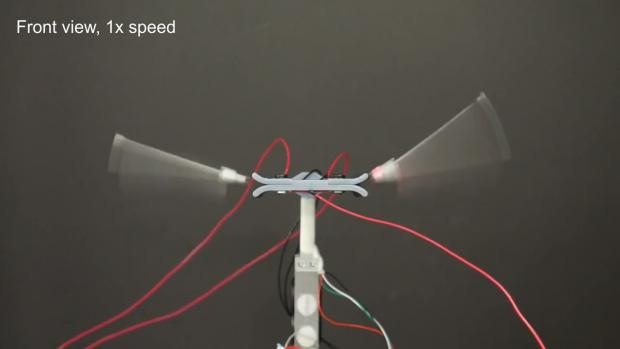
Breaking News
 BREAKING: ACTIVE SHOOTER at Brown University - Two People Dead - 8 Critically Injured
BREAKING: ACTIVE SHOOTER at Brown University - Two People Dead - 8 Critically Injured
 Argentina Moves to Let Banks Offer Bitcoin and Crypto Services
Argentina Moves to Let Banks Offer Bitcoin and Crypto Services
 We're One Storm Away From Disaster
We're One Storm Away From Disaster
 Think a Dairy Cow Will Tie You Down? Here's the Truth.
Think a Dairy Cow Will Tie You Down? Here's the Truth.
Top Tech News
 This tiny dev board is packed with features for ambitious makers
This tiny dev board is packed with features for ambitious makers
 Scientists Discover Gel to Regrow Tooth Enamel
Scientists Discover Gel to Regrow Tooth Enamel
 Vitamin C and Dandelion Root Killing Cancer Cells -- as Former CDC Director Calls for COVID-19...
Vitamin C and Dandelion Root Killing Cancer Cells -- as Former CDC Director Calls for COVID-19...
 Galactic Brain: US firm plans space-based data centers, power grid to challenge China
Galactic Brain: US firm plans space-based data centers, power grid to challenge China
 A microbial cleanup for glyphosate just earned a patent. Here's why that matters
A microbial cleanup for glyphosate just earned a patent. Here's why that matters
 Japan Breaks Internet Speed Record with 5 Million Times Faster Data Transfer
Japan Breaks Internet Speed Record with 5 Million Times Faster Data Transfer
 Advanced Propulsion Resources Part 1 of 2
Advanced Propulsion Resources Part 1 of 2
 PulsarFusion a forward-thinking UK aerospace company, is pushing the boundaries of space travel...
PulsarFusion a forward-thinking UK aerospace company, is pushing the boundaries of space travel...
 Dinky little laser box throws big-screen entertainment from inches away
Dinky little laser box throws big-screen entertainment from inches away
 'World's first' sodium-ion flashlight shines bright even at -40 ºF
'World's first' sodium-ion flashlight shines bright even at -40 ºF
Causing a buzz: Insect-inspired robot weighs just 0.01lbs and can fly at 1.6mph...

An insect-inspired flying robot with wings that buzz thanks to a new type of electric 'muscle' has been developed by British scientists.
The prototype weighs about 0.01lbs (5g), has a wing span of 5.9 inches (15cm) and can fly at 1.6mph.
It is hoped that one day the robot will be able to look for survivors in disaster zones such as collapsed buildings, monitor hard-to-reach infrastructure and pollinate crops.
Researchers at Bristol University said its wings are so efficient that they actually provide more power than an insect muscle of the same weight.
'It's very challenging to beat nature,' Dr Tim Helps, lead author of the study, told MailOnline.
'If we can produce more power than insect muscle, it means that we can potentially have better performance than an insect — which is really exciting.'
He added: 'It's very challenging because nature does such an amazing job.'
Until now, typical micro flying robots have used motors, gears and other complex transmission systems to achieve the up-and-down motion of the wings.
However, researchers involved in the study said this had added complexity, weight and undesired dynamic effects.
Instead, after taking inspiration from bees and other flying insects, they created an artificial muscle system called the liquid-amplified zipping actuator (Laza), which achieves wing motion using no rotating parts or gears.
The wing itself acts like a negatively charged electrode, while above and below it are two positively charged electrodes.



